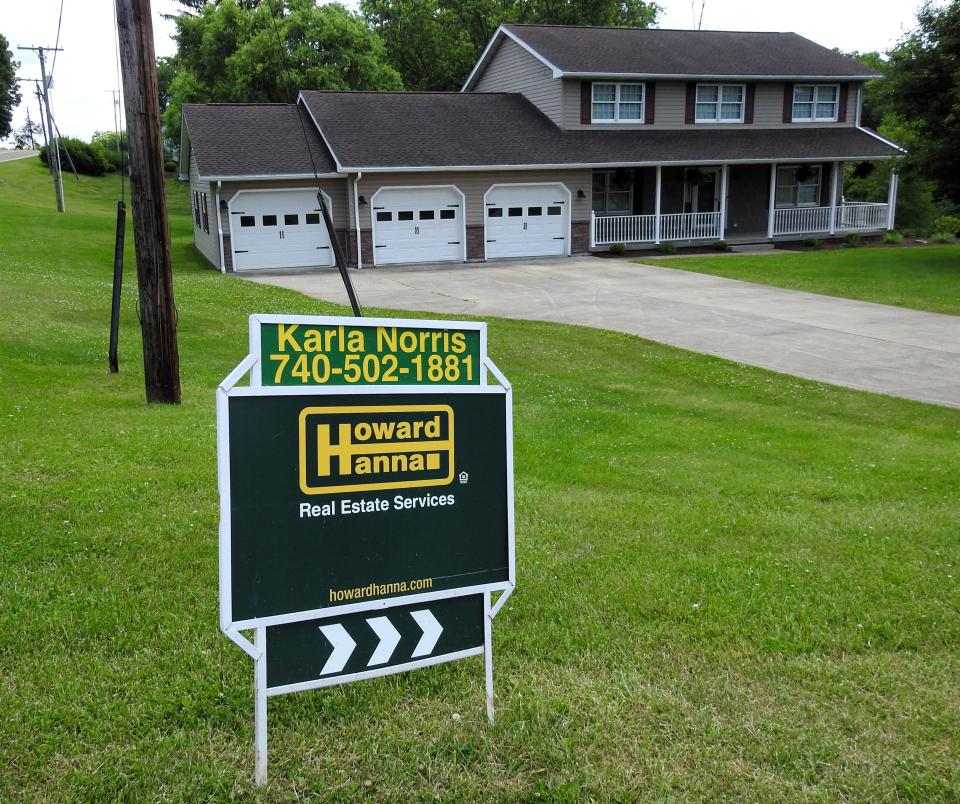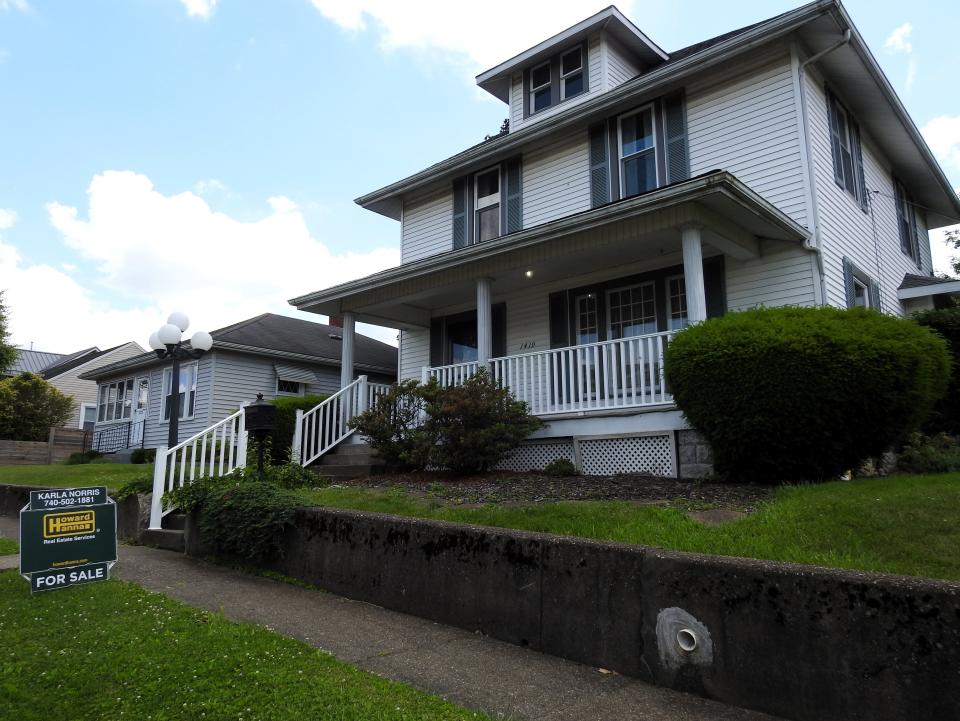Housing study looked at population, income, prices, types of housing. Here are the results
COSHOCTON − A recent housing analysis reveals Coshocton County has a severe lack of housing across the board related to price range and location.
The Coshocton Port Authority and Ohio Mid-Eastern Governments Association worked with The Hamman Consulting Group on the study. The report was funded from a grant by Resilience Initiative for Southeastern and Eastern Ohio (RISE Ohio). Local real estate agents and brokers were engaged for the analysis as well.

Need for the study
Tiffany Swigert, executive director of the port authority, said housing issues came to light during the COVID-19 pandemic as people were allowed to work remotely more. Some people realized the big city wasn't for them or could sell while the market was high, Swigert said. This led to them seeking somewhere like Coshocton, which is smaller and more affordable than a major city like Columbus, Cleveland or Cincinnati.
More: Coshocton County's housing market is different for people buying, selling and still looking
"We hear stories everyday of people moving into our community. It's encouraging and exciting, but it also creates some challenges," Swigert said of the lack of housing it created. "It's a barrier to workforce development. It's a barrier to us growing and attracting new companies here."
Swigert said the purpose of the study was to understand what Coshocton currently has in the housing market and what should be built or revitalized based on needs and demographics. She said this is important for real estate developers and financial institutions.
She said the study showed the area is lacking in ranch style homes for older couples looking to downsize and affordable housing, including rentals. One step forward is working with landowners on building new residences, with Swigert saying the biggest need would probably be houses for under $180,000.
"It's really difficult to just approach a developer and say, 'we want you to come to Coshocton.' And they say, 'tell me why I should.' If we don't have the information to back that up, not just in conversation but fact based information they can lay in front of their financial institution or investor to back up the need, they're not coming," Swigert said. "Now, we're able to take these documents and say 'developer, this is why we want you to come to Coshocton, here is why it makes sense financially for you to come to Coshocton' because it's all about them making money at the end of the day."

Statistics related to population
Coshocton County's population for 2023 was 36,376 people with about 40% living in city limits. This is a drop of from 37,046 in the 2010 census and 36,621 in the 2020 census. While the county has experienced an overall decrease in population, there were increases in what was designated in the report as the east, northeast and north zones. This was attributed to the Amish.
About 38% of residents are between the ages of 35 to 64. From birth to 19 is about 23% and those older than 65 make up around 21%. Median ages for all zone have increased since 2010 and look to go up still.
However, number of families, households of two people or more who are related, has gone down 4.4% since 2010 and is predicted to go down another 13 families by 2028. Households, which is people in the same housing unit but not related, stayed about the same. Average household size also didn't change much.
As far as annual median income, the northeast and north zones were the highest at $65,612 and $64,392, respectively. These areas also have the highest average household incomes at $85,043 and $86,120, respectively. Median income and average income for the entire county is expected to go up through 2028.
Statistics related to residences
As of 2023, there were 16,295 total housing units in Coshocton County. More than 7,000, or about 43%, were in the central zone, comprising the City of Coshocton. Of those, 6,012 are designated as urban living units with 1,037 as rural. The rest of Coshocton County is also considered rural.
For the central zone, 56% of housing is owner occupied, 33% are rentals and 10% are vacant. The rest of the county is fairly even with about 73% to 77% owner occupied homes per zone, 10% to 16% rentals and 6% to 15% vacant. Vacant housing includes seasonal or occasional use properties and those currently for sale or rent, but not lived in.
Owner occupied housing units increased by 208 units from 2010 to 2023 and is projected to go up another 100 units by 2028. The majority are in the central zone, 3,980. More than 41% have been in their homes since at least 1999. For rentals, 64% are in the central zone. From 2010 to 2023, rental units decreased by 259. Of all housing, more than 55% were built prior to 1970. Houses with mortgages across the county range from 54% to 59%
More than 72% of occupied housing in the county have an estimated value of less than $200,000. Based on value distribution, this means housing options for higher wage earners are extremely limited. The highest value homes, between $300,000 to $350,000, are primarily in the northeast zone. Lesser value homes, from $100,000 to $150,000 are mainly in the central zone. For contrast, the average home cost in 2023 in the central zone was $123,197 and in the northeast zone was $295,573.
Single family units sold went up from 2018 to 2021, but then went down because of increases in interest rates. Homes are selling for closer to list price, 98.5%, now than in 2018, 93.5%. The median price went from $94,500, or $67.66 per square foot, in 2018 to $155,000, or $115.63 per square foot, in 2023.
At the end of 2023, there were 51 single family homes on the market with 11 under contract, but allowing showings, and eight under contractor with no showings. Twelve housing permits for new construction were issued in 2022 and 2023 with four in the City of Coshocton, three each in Warsaw and West Lafayette and two in Plainfield.
Next steps
The report made several suggestions for where Coshocton County can go from here based on leveraging economic incentives, expanding the community reinvestment area, demographic specific opportunities and targeted marketing, direct outreach and networking.
Seven of the 10 census tracts in the county are eligible for new markets tax credits. There is also only one project, the Honey House on Main Street, active as a Community Reinvestment Area and receiving a tax abatement for renovations. Tax increment financing can also be used to upgrade or expand utilities and infrastructure for development.
Multifamily units should be a focus as this is often what is sought by seniors looking to downsize, young professionals and those who need affordable housing. These are groups who often like the flexibility of renting and don't need as much space. Older commercial buildings could be turned into such housing units, the study suggested.
It was also suggested that data from the report should be used to make marketing presentations for potential developers and local officials and stakeholders should try to connect more with project influencers and decision makers, industry associations and local property owners to encourage new builds and remodels.
Leonard Hayhurst is a community content coordinator and general news reporter for the Coshocton Tribune with more than 15 years of local journalism experience and multiple awards from the Ohio Associated Press. He can be reached at 740-295-3417 or llhayhur@coshoctontribune.com. Follow him on X (formerly Twitter) at @llhayhurst.
This article originally appeared on Coshocton Tribune: Study confirms Coshocton's lack of housing, offers possible solutions

